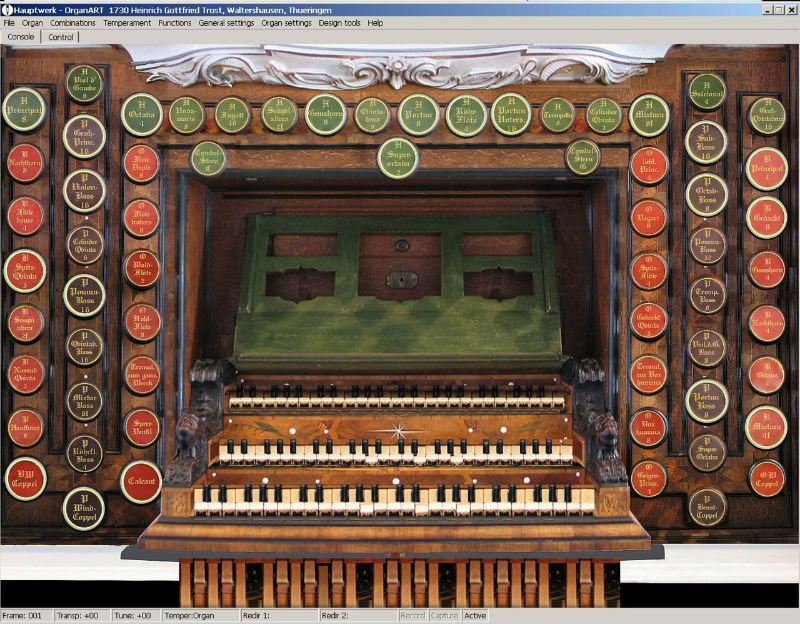Login

1730 Trost, Waltershausen, Germany [Back to Library]

| Producer: | OrganArt Media |
| Builder: | Trost |
| Country: | Germany |
| Style: | |
| Manuals: | 3 |
| Pedalboard: | Yes |
| Audio Ouput: | Stereo |
| Software(s): | |
| Date Built: | 1730 |
Description: |
The Trost organ of Waltershausen, with its 47 stops and 6 transmissions, is the biggest baroque organ in Thuringia. It is largely preserved in its original state of 1730 (a good 70% of the pipe material was built by Trost) and therefore is an invaluable reference when performing organ music by J. S. Bach and his contemporaries. Today this organ is viewed as the most authentic "Bach organ". The organ was built in 1724–30 by Tobias Heinrich Gottfried Trost, but due to several specification changes and severe conflicts between Trost and the Waltershausen parish, it was not completed until around 1755, probably by the organ builder Johann Heinrich Ruppert. The instrument has survived without major changes, and was brought back to its 1730 state by Orgelbau Waltershausen during the years 1994–98. It is a typical instrument of the Thuringian organ building school with ranks such as a Violonbass, mixtures containing thirds, Sesquialtera, and Viola di Gamba, etc. This, and the richness of well-blending stops allowing endless sound combinations, already anticipates the romantic organ of a century later in a fascinating way. Trost's outstanding and innovative concepts using unconventional and extreme pipe measurements in stops like the Geigenprincipal, Flauto traverse, Vagarr, but likewise stops with a delicate sweetness preferred by Bach, such as the Flauto dolce, Flöte dupla and Nachthorn etc., also support the upcoming gallant style. The firm ground tone (German "Gravität") demanded by Bach is realized by three 16 foot manual ranks, a 16 and 32 foot Posaune in the Pedal, no less than 12 eight foot flue stops in the three manual divisions, rich mixtures as well as two Sesquialtera stops. The instrument has an extremely rich plenum sound, while never forcing the sound. The organ facade, designed by Johann Eberhard Strassburger, the architect of the Anna-Amalia library of Weimar, and the console are of unrivalled beauty. Even the manuals are original. Although we don't know for sure, it is likely that Bach played this organ. We do know that he expressed his highest appreciation for the beautiful sound and good craftsmanship of Trost's organs while visiting the Trost organ of Altenburg in 1739. The church architecture, which apparently was a predecessor of the Dresden Frauenkirche, was designed by Wolf Christoph Zorn of Plobsheim. This special architecture, uniting altar, pulpit and organ, perfectly realizes the Lutheran liturgical idea. Therefore the organ is located above the altar (also found in the Frauenkirche Dresden). The church room has semi-dry acoustics with about 2.5 seconds of reverberation. |
| # of uploads with organ: | 465 |
| # of users uploaded using organ: | 41 |
| Popular Uploads: |
Weinen, Klagen, Sorgen, Zagen (Popup Player) |
| Website: | https://www.organartmedia.com/en/heinrich-gottfried-trost |
Comments/Reviews
Have we missed some information regarding a sample set? Let us know using our Contact Page. We would greatly appreciate it!
